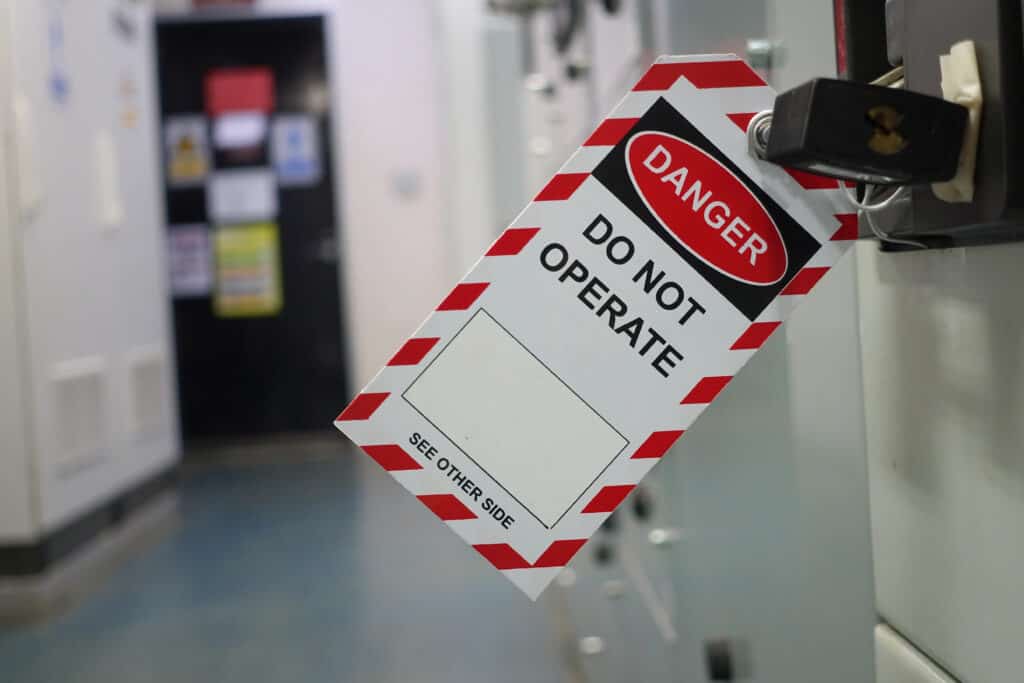There have been many fatal accidents in sawmills that were a result of not following proper lockout/tagout (LOTO) procedures. One such incident occurred in 2016 at a sawmill in British Columbia, Canada, where a worker was killed while performing maintenance on a conveyor system.
According to reports, the worker was attempting to clear a jam in the conveyor system when the machine unexpectedly started up, crushing the worker. It was later determined that the conveyor had not been properly locked out and tagged out, and that the worker had failed to follow proper LOTO procedures.
An investigation by the British Columbia Coroner’s Service found that the conveyor had not been de-energized and that there were no lockout devices or warning tags in place. Additionally, the investigation revealed that the worker had not received proper training on LOTO procedures and had not followed established safety protocols.
The sawmill was found to be in violation of several workplace safety regulations, and the company was fined. The incident was a tragic reminder of the importance of proper LOTO procedures and the need for effective training and enforcement to prevent workplace accidents.
This incident highlights the devastating consequences that can result from not following proper LOTO procedures in a sawmill or any other workplace. It is essential for employers to provide workers with the necessary training, equipment, and procedures to ensure their safety and to take LOTO procedures seriously to prevent accidents and fatalities.
Lockout/tagout (LOTO) is a safety procedure used to ensure that dangerous machines or equipment are properly shut off and cannot be accidentally started up while maintenance or repairs are being performed. In a sawmill, LOTO is an essential safety protocol to protect workers from hazardous machinery such as saws, conveyors, and other equipment.
Here is a general guide on how to lock out and tag out equipment in a sawmill:
- Identify the equipment that needs to be locked out and tagged out. This includes any machine or equipment that could cause harm if it were to be started up while maintenance or repairs are being performed.
- Notify affected employees. Let everyone know that the equipment will be locked out and tagged out, and inform them of the reason why. If necessary, arrange for alternative equipment or procedures to be used during the maintenance or repair work.
- Turn off the equipment. Ensure that all switches and controls are in the “off” position, and that any power sources are disconnected.
- De-energize the equipment. This involves isolating the equipment from its power source, either by unplugging it or by using a lockable disconnect switch.
- Apply lockout devices. A lockout device is a physical device that is used to prevent a machine from being turned on or started up. It should be applied to the energy isolating device (such as a lockable disconnect switch) so that it cannot be removed without a key or combination.
- Apply tagout devices. A tagout device is a warning tag that is attached to the lockout device, indicating that the equipment is locked out and should not be operated. The tag should include information such as the equipment’s identification number, the reason for the lockout, and the name of the person who applied the lockout.
- Verify that the equipment is de-energized. Before starting work, verify that the equipment is de-energized and cannot be started up. This can be done by attempting to turn on the equipment or by using a voltage tester to check for electrical current.
- Perform the maintenance or repair work. Once the equipment is locked out and tagged out, the maintenance or repair work can begin.
- Remove the lockout and tagout devices. After the maintenance or repair work is complete, the lockout and tagout devices should only be removed by the person who applied them. Before removing the devices, ensure that the equipment is in a safe state and that all tools and other materials have been removed.
- Restore power to the equipment. Once the lockout and tagout devices have been removed, the equipment can be restored to its normal operating condition.
By following these steps, you can help ensure the safety of workers in a sawmill when performing maintenance or repair work on dangerous equipment.
Azzier CMMS from Tero Consulting includes an elaborate Procedures Library that allows clients to set up LOTO procedures to ensure your workplace remains safe and accident free. Find out more here.




